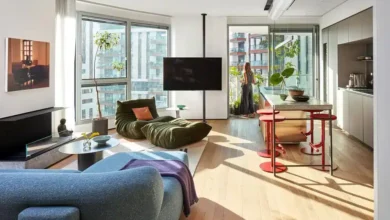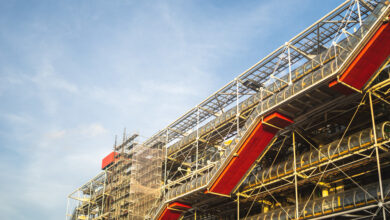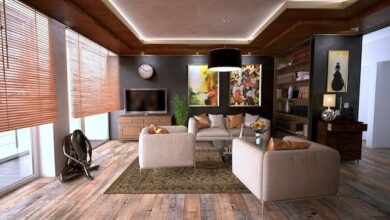Revolutionising Comfort: The Latest Innovations in Ergonomic Furniture Design

In today’s fast-paced world, the importance of comfort and well-being in our daily environments has never been more pronounced. Central to this pursuit is ergonomic furniture – a design philosophy that harmonises furniture with the human body to improve comfort, health, and overall efficiency. Originally conceived to enhance workplace productivity, ergonomic design has now permeated every aspect of modern living, from the office chair to the living room sofa.
In this article, we explore the latest innovations that are setting new standards in ergonomic furniture design, demonstrating how these creations are not just revolutionising our comfort but also enriching our health and well-being in the environments we inhabit.
Table of Contents
The Evolution of Ergonomic Design
Ergonomic furniture’s journey began in the early 20th century, mirroring the industrial revolution’s focus on efficiency. Initially centred on productivity, the design ethos soon shifted to prioritising worker health and comfort, marking the inception of ergonomic principles. This evolution was highlighted by the mid-century emergence of designs like the Eames lounge chair, which seamlessly blended aesthetics with body-focused comfort, setting a precedent for modern ergonomic furniture.
The late 20th century saw a significant shift with the rise of office culture and computer technology. This era ushered in furniture designed for posture support and adapting to new working styles, addressing office-related health issues. Today, ergonomic design transcends physical comfort, aiming to create environments conducive to both physical and mental well-being. It incorporates technology and a holistic understanding of human health, leading to innovations like chairs that adapt to movement and desks promoting activity. These milestones in ergonomic design are not just shaping furniture to fit our spaces but are tailored to fit us, heralding a future where comfort and well-being are paramount in design.
Current Trends in Ergonomic Furniture
- Adjustable Chairs: The epitome of personalisation in ergonomic design. These chairs are revolutionising the way we sit, with features like adjustable armrests, lumbar support, and tilt mechanisms. They’re not just chairs, they’re comfort tailored to each individual’s physique.
- Standing Desks: Standing tall in modern office spaces, these desks are a response to the sedentary lifestyle concerns. They promote movement and flexibility, allowing users to alternate between sitting and standing, reducing the risks associated with prolonged sitting.
- Ergonomically Designed Sofas: Comfort meets style in living rooms. These sofas are crafted to support natural posture, reduce strain on the back and neck, and provide optimal comfort without compromising on aesthetic appeal.
- Modular Workstations: Adaptable and dynamic, these workstations cater to the evolving needs of modern workspaces. They offer flexibility in arrangement and are designed to enhance productivity and comfort in diverse working environments.
- Smart Ergonomic Solutions: The fusion of technology and furniture. Think chairs with built-in posture sensors or desks with height adjustment controlled via smartphone apps. These smart solutions are making ergonomic benefits more accessible and personalised.
- Ergonomic Accessories: Small but mighty, items like footrests, monitor stands, and ergonomic mouse pads are gaining popularity. They complement main furniture pieces and contribute significantly to an overall ergonomic environment.
- Children’s Ergonomic Furniture: Tailored for the little ones, this trend focuses on promoting good posture from a young age. Child-friendly desks, chairs, and even bed frames are designed to support growing bodies and encourage healthy habits.
- Eco-Friendly Ergonomics: Sustainability joins hands with comfort. More designers are focusing on eco-friendly materials and production methods, combining the principles of ergonomics with environmental consciousness.
Technological Advancements and Their Impact
The realm of ergonomic furniture design is experiencing a technological renaissance, where innovation is not just about form or function, but about intelligent integration. Technology, the invisible yet powerful force, is playing a pivotal role in reshaping ergonomic furniture into something more intuitive and responsive. Imagine sitting in a chair that not only adjusts to your posture but also reminds you to change positions for optimum health. This is no longer a vision of the future, it’s a reality in today’s smart furniture, equipped with health monitoring features. These high-tech pieces are designed to understand our bodies and respond in real-time, offering unprecedented levels of comfort and health benefits.
The surge in app-controlled furniture settings heralds a new age of personalisation in ergonomics. With a simple swipe on a smartphone, users can adjust desk heights, chair angles, and even ambient lighting, tailoring their environment to their precise needs. This synergy between technology and ergonomic design isn’t just enhancing user experience, it’s revolutionising the way we interact with our surroundings. By incorporating advanced sensors, AI algorithms, and user-friendly interfaces, ergonomic furniture is now not just a passive object in our space but an active participant in our well-being.
Health and Wellbeing Benefits
- Improved Posture: Ergonomic furniture is designed to support the natural alignment of the spine. Consistent use helps in maintaining a healthy posture, reducing the risk of back pain and other spinal issues. Studies have shown a significant decrease in back pain complaints in individuals using ergonomic seating.
- Reduced Risk of Musculoskeletal Disorders: Ergonomic chairs and desks reduce strain on various body parts, especially during long working hours. This minimises the risk of developing musculoskeletal disorders, as indicated in research linking ergonomic furniture to lower incidences of these conditions.
- Enhanced Comfort and Productivity: Comfortable seating and well-designed workspaces lead to increased productivity. Experts in occupational health often cite ergonomic furniture as a key factor in creating an efficient and comfortable work environment.
- Decreased Fatigue and Increased Energy Levels: Ergonomic designs promote better circulation and reduce muscle fatigue. This leads to higher energy levels throughout the day, as supported by studies comparing traditional and ergonomic furniture in office settings.
- Mental Wellbeing: A comfortable physical environment contributes to mental well-being. Ergonomic furniture can reduce stress and anxiety associated with physical discomfort, enhancing overall job satisfaction.
- Long-term Health Benefits: Regular use of ergonomic furniture can contribute to long-term health benefits, including reduced risk of chronic pain and improved overall physical health, as supported by longitudinal studies in ergonomics.
- Expert Endorsements: Renowned ergonomists and health professionals endorse the use of ergonomic furniture, citing its benefits in various published articles and health guidelines.
The Future of Ergonomic Furniture Design
The horizon of ergonomic furniture design is rapidly evolving, driven by technological advancements, the rise of remote working, and a heightened focus on sustainability. As home offices become more prevalent, there’s a growing demand for furniture that integrates the comfort and functionality of office ergonomics into domestic settings. Future designs are likely to feature AI and IoT integration, offering furniture that not only adjusts to individual needs but also learns and adapts to user preferences, providing unparalleled personalisation.
Sustainability will also take centre stage, with eco-friendly materials and sustainable manufacturing processes becoming the norm in ergonomic furniture design. This shift reflects a broader commitment to environmental stewardship and health-conscious living. We can expect to see more inclusive designs catering to diverse body types and ages, emphasising adaptability and user-centric customisation.
The future of ergonomic furniture is set to be more intelligent, personalised, and environmentally responsible, reshaping how we interact with our living and working spaces in profound ways.
Embrace the future of comfort and style with All Seasons Furnishings. Discover our innovative, ergonomic furniture designs that blend functionality, comfort, and sustainability. Visit Allseasonsfurnishings and transform your space into a haven of well-being. Your ideal ergonomic solution awaits!




